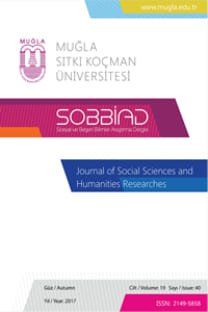RUSYA’NIN PANSLAVİZM POLİTİKASININ BALKANLARDA UYGULANMASINA DAİR BİR LAYİHA
Rusya, Çar I. Petro’dan itibaren güçlü bir devlet olabilmek için sıcak denizlere ulaşabilme ve Balkanlara yayılma siyaseti izlemiştir. I. Petro’dan sonra Rus tahtına çıkan halefleri de aynı siyaseti benimsemişlerdir. Rusların bu amaçlarına ulaşabilmeleri için Osmanlı Devleti’nin yıkılması ve onun sahibi olduğu boğazlar ile Balkanları ele geçirmeleri gerekmektedir. Bu nedenle XVIII. yüzyılın sonlarından itibaren Rusya’nın hedefinde Osmanlı Devleti vardır. Rusya, bu amacına ulaşabilmek için farklı politikalar benimsemiştir. Çariçe II. Katerina 1782’de I. Petro’nun ortaya koyduğu hedeflere ulaşabilmek için Grek Projesi’ni uygulamaya koymuş, ancak tam bir netice alamamıştır. XIX. yüzyılın ortalarından itibaren ise Rusya, Slav kökenli Balkan uluslarını kendi hakimiyetine alabilmek için Panslavist bir politika takip etmiştir. Bu politikanın bir sonucu olarak 1870’lerden sonra Balkan ulusları arasında yoğun bir isyan ve fesat hareketi başlamıştır. 1877-78 Osmanlı-Rus Savaşı’nın sonucunda ise bazı Slav kökenli Balkan ulusları bağımsızlıklarını kazanmıştır. Biz bu çalışmamızda, Rusya’nın Panslavist politikasını izah ettikten sonra, Eflak, Boğdan, Sırbistan, Karadağ, Bosna-Hersek, Arnavutluk ile Bulgaristan ahvali hakkında ve Rusların buralarda çevirdikleri entrikalara ve besledikleri emellere dair yazarı belli olmayan bir layihanın içeriğinden söz edeceğiz.
Anahtar Kelimeler:
Rusya, Slav, Panslavizm, Balkanlar, Layiha
An Anonymous Report on Russian’s Panslavist Policy in the Balkans
Russia pursued the policy of expansion on the Balkans in order to access to the warm water ports for being a strong state since the Tsar Petro I. The successors to the Russian throne after Petro I the same policy was adopted. Russians had to encounter with the Ottoman State which was the owner of the straits and had the considerable territories in the Balkans for achieving this goal. For this reason the Ottoman state became Russian’s target since the end of the 18th century. It has adopted different policies to achieve these objectives. Tsarina Katerina II set out Greek Project of Petro I was implemented in 1782 for achieving these targets, but could not get a satisfactory result. Russia followed policy of Panslavism since the middle of the 19th century, in order to become a sovereign state of Slavic nations in the Balkans. As a result of this policy among the Balkan nation intense rebellion and disorder started after 1870. The results of the 1877-78 Ottoman-Russian War, the some Balkan nation of Slavic origin secured their independence. In this study after briefly dealing with the Russia's policy of Panslavism we will discuss an anonymous report, which was about the Russian’s intrigues on Balkan country namely Wallacia, Serbia, Montenegro, Bosnia-Herzegovia, Albania and Bulgaria, and we will undertake situations of these countries then.
Keywords:
Russian, Slavic, Panslavism, the Balkans, Report,
- ISSN: 2149-5858
- Yayın Aralığı: Yılda 2 Sayı
- Başlangıç: 2000
- Yayıncı: Mugla Sitki Kocman University
Sayıdaki Diğer Makaleler
RUSYA’NIN PANSLAVİZM POLİTİKASININ BALKANLARDA UYGULANMASINA DAİR BİR LAYİHA
MENTEŞE SANCAĞI’NDA İTALYAN VE YUNAN İŞGALLERİNE TEPKİLER
LOZAN ANTLAŞMASI’NDAN SONRA MUĞLA VİLAYETİ’NE GELEN BALKAN MUHACİRLERİ’NİN İSKÂNI MESELESİ
I. DÜNYA SAVAŞI YILLARINDA MUĞLA’DAKİ EKONOMİK KALKINMA FAALİYETLERİ
SAHA (YAKUT) CUMHURIYETI: COĞRAFI KIMLIK ANALIZI DENEMESI
KIZILÇULLU KÖY ENSTİTÜSÜ: KURULUŞUNDAN İLK MEZUNLARINA
Çeşitli Program Değerlendirme Yaklaşımlarının Karşılaştırılması
NURGÜN OKTİK, F. GAYE GÖKALP YILMAZ, ÇAĞLAR ÖZBEK, FERHAT DEĞER
